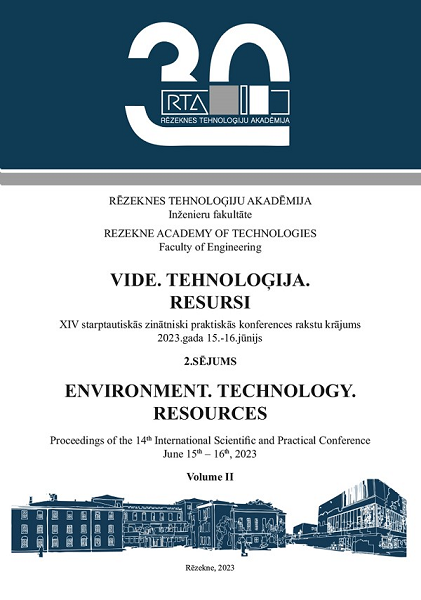AUTOMATION OF FEEDBACK ANALYSIS IN ASYNCHRONOUS E-LEARNING
DOI:
https://doi.org/10.17770/etr2023vol2.7285Keywords:
Computer vision, Convolutional neural network, E-learning, Emotion Feedback, Facial ExpressionAbstract
With the recent hit of the Pandemic study process is shifted to E-learning. Measuring the actual progress of a student in Asynchronous e-learning because of machine-human interaction and feedback is also considered a primary issue in this area. With the rapid development of artificial intelligence, computers can capture surroundings. Image processing is a rising technique in Artificial Intelligence (AI). Recognition of an individual's emotion helps identify the person's inner state. It is easy to measure a student's feedback about the session by doing it. The main functionality of this project is to capture the student's enough frames during the study session and provide the analysis of the average emotions to the administration panel. This prototype was used on 10 minutes of lecture to capture the emotion. The primary goal of this proposed system is to capture the learner's emotion at a specific interval during the e-learning session and provide the feedback of it to the instructor.
Downloads
References
H. Alodan, “E-Learning transformation during the covid-19 pandemic among faculty members at princess nourah bint abdul rahman university,” Utopía y Praxis Latinoamericana, vol. 26, no. 2, pp. 286-302, 2021.
M. Mamoon-Al-Bashir, M. Rezaul Kabir and I. Rahman, “The Value and Effectiveness of Feedback in Improving Students Learning and Professionalizing Teaching in Higher Education,” Journal of Education and Practice, vol. 7, no. 16, pp. 38-40, 2016.
R. Maltese, “How To Create a Virtual Classroom,” 2021. [Online]. Available: https://corp.kaltura.com/blog/creating-a-virtual-classroom. [Accessed March 1 2023].
A. Perveen, “Synchronous and Asynchronous E-Language Learning: A Case Study of Virtual University of Pakistan,” Open Praxis, vol. 8, no. 1, pp. 21-39, 2016. DOI: http://doi.org/10.5944/openpraxis.8.1.212
S. Rukavina, S. Gruss, H. Hoffmann and H.C. Traue,“Facial Expression Reactions to Feedback in a Human-Computer Interaction - Does Gender Matter?”. Psychology, Vol.7 No.3, 2016. DOI: http://dx.doi.org/10.4236/psych.2016.73038
M. Binu, “The role of feedback in classroom instruction,” The Journal of ELTIF, 2020.
“Facial expressions,” The Emotional Intelligence Academy. Online]. Available: https://www.eiagroup.com/knowledge/facial-expressions/. [Accessed March 1 2023].
“What is a neural network,” Amazon Web Services. [Online]. Available: https://aws.amazon.com/what-is/neural-network/. [Accessed March 1, 2023].
D. Stutz, “Understanding Convolutional Neural Networks,” 2014. [Online]. Available: https://davidstutz.de/wordpress/wp-content/uploads/2014/07/seminar.pdf. [Accessed March 1, 2023].
G. Bradski and A. Kaehler, Learning OpenCV. O’Reilly Media, 2008.
“FER2013 Dataset,” [Online]. Available: https://datasets.activeloop.ai/docs/ml/datasets/fer2013-dataset/
[Accessed March 1, 2023].
A. Kapenieks, I. Daugule, K. Kapenieks, V. Zagorskis, J. Kapenieks Jr., Z. Timsans and I. Vitolina, “TELECI Approach for e-Learning User Behavior Data Visualization and Learning Support Algorithm, “Baltic J. Modern Computing, Vol. 8, No. 1, 129-142, 2020. https://doi.org/10.22364/bjmc.2020.8.1.06


